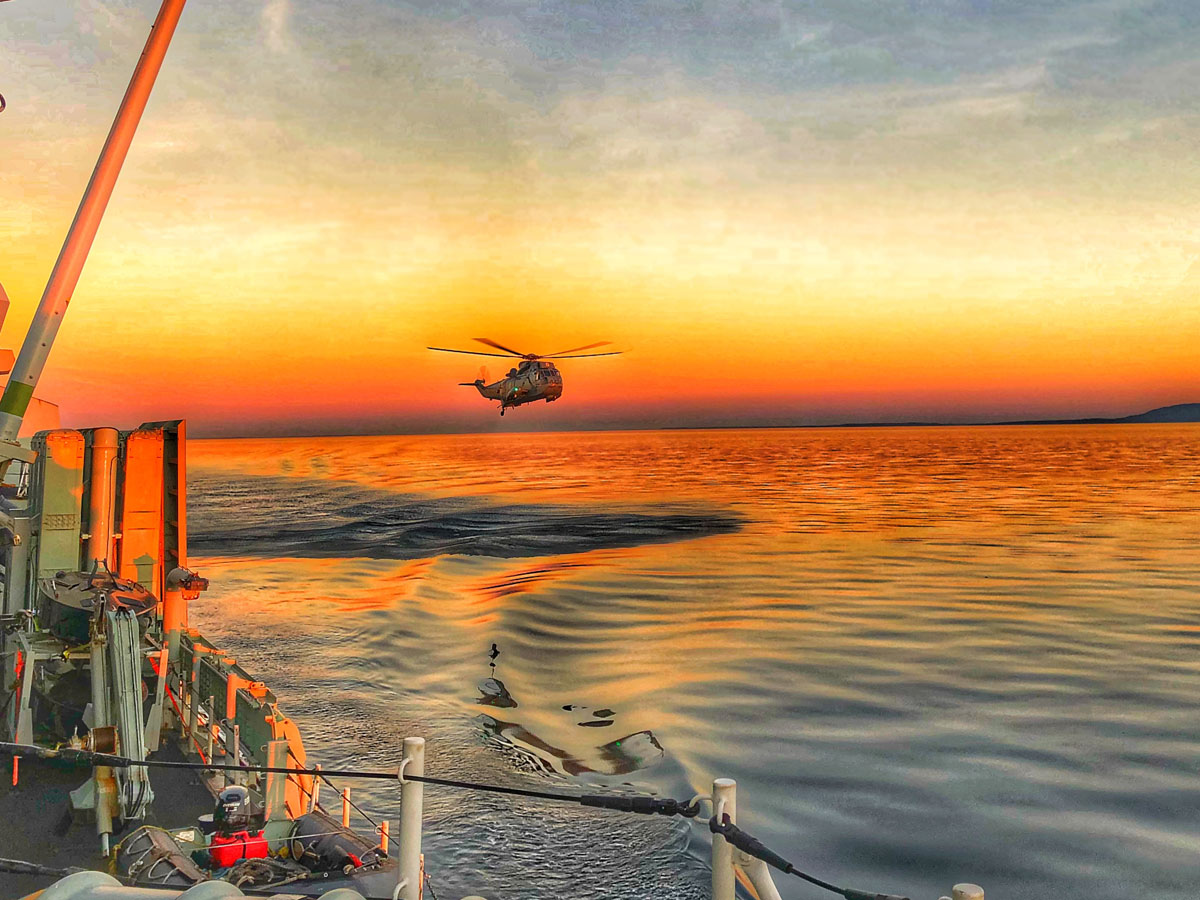Sea King lifts and thrusts into retirement
By Lookout on Dec 10, 2018 with Comments 0
Peter Mallett, Staff Writer ~
Heartfelt tributes flowed freely during the official Sea King helicopter retirement parade Dec. 1, when the military and DND community bade farewell to the longest serving aircraft in the Royal Canadian Air Force (RCAF).
Inside the hangar at 443 Maritime Helicopter Squadron at Pat Bay, more than 500 people gathered to witness the historic send-off.
“To our magnificent Sea King, though you were an inanimate object, you were a living presence in the lives of so many of us in the navy and air force; we will certainly miss you,” said Lieutenant-General Al Meinzinger, Commander of the RCAF, to the crowd. “I see all of the people here today that have worked on the Sea King, many of whom spent 20, 30 or more years around the aircraft. It really was the catalyst for the mission, and for the friendships and bonds we established within the air force and with our navy teammates.”
When Rear-Admiral Art McDonald, Deputy Commander of the RCN, stepped to the podium, he also noted the partnership between the two environments that was forged by the aircraft and its role with navy warships. The former Commander of Maritime Forces Pacific said that over the years, from the Cold War era to present-day operations, the Sea King served an integral part in naval deployments.
“Today is the day we retire a stalwart workhorse and celebrate how it provided the foundation for continued naval-aviation success in a navy-air force industry partnership,” said RAdm McDonald. “The Sea King was more than just a helicopter; since its introduction in the 1960s it fundamentally changed the nature of naval operations worldwide.”
When the Sea King was procured in 1963 its intended use was for naval anti-submarine warfare. But as the flight hours mounted it proved its versatility and reliability for countless other tasks and missions. Those included anti-surface warfare, maritime engagement and narcotics interdiction operations, counter-terrorism and anti-piracy, humanitarian assistance, search and rescue, and domestic disaster relief operations.
At the conclusion of the parade everyone stepped outside the hangar’s giant bay doors to watch the ceremonial flypast of three CH-124 Sea Kings. Under grey skies and a light drizzle, many of those in attendance grabbed their cell phones and pointed their devices skywards as the helicopters made two passes above the hangar before returning to the tarmac.
The last of the Sea Kings are scheduled to perform one final flight over the skies of Victoria in an exercise with other RCAF aircraft on Dec. 17. It will remain on standby as the clock winds down to New Year’s Eve, when the newest generation of RCAF helicopters, the CH-148 Cyclone, becomes the main ship-borne maritime helicopter.
LGen Meinzinger said approximately 10 Sea Kings will find their way into museums or be used for monuments, while the remainder will be disposed of under normal disposal plans for Crown assets.
When the military’s longest-serving helicopter officially retires at the end of this month, it will conclude 55 years of service, and approximately 550,000 hours of flying time, which is the equivalent to the shortest distance between the earth and Mars or 7,200 trips around the globe.
Filed Under: Top Stories
About the Author:






